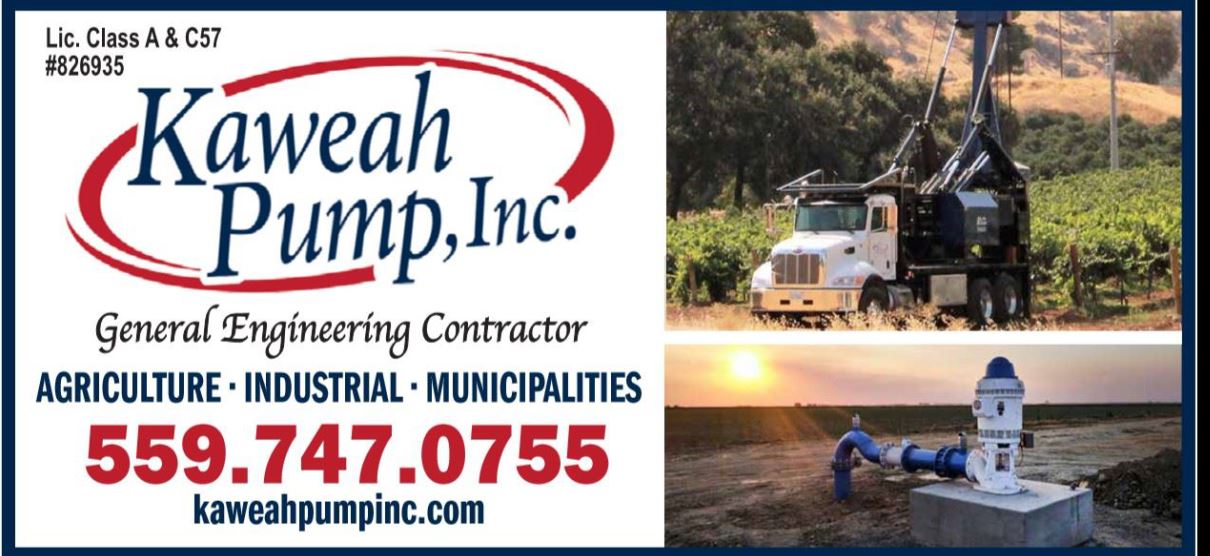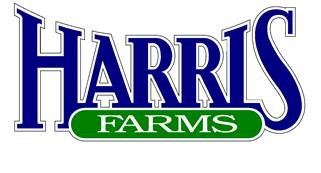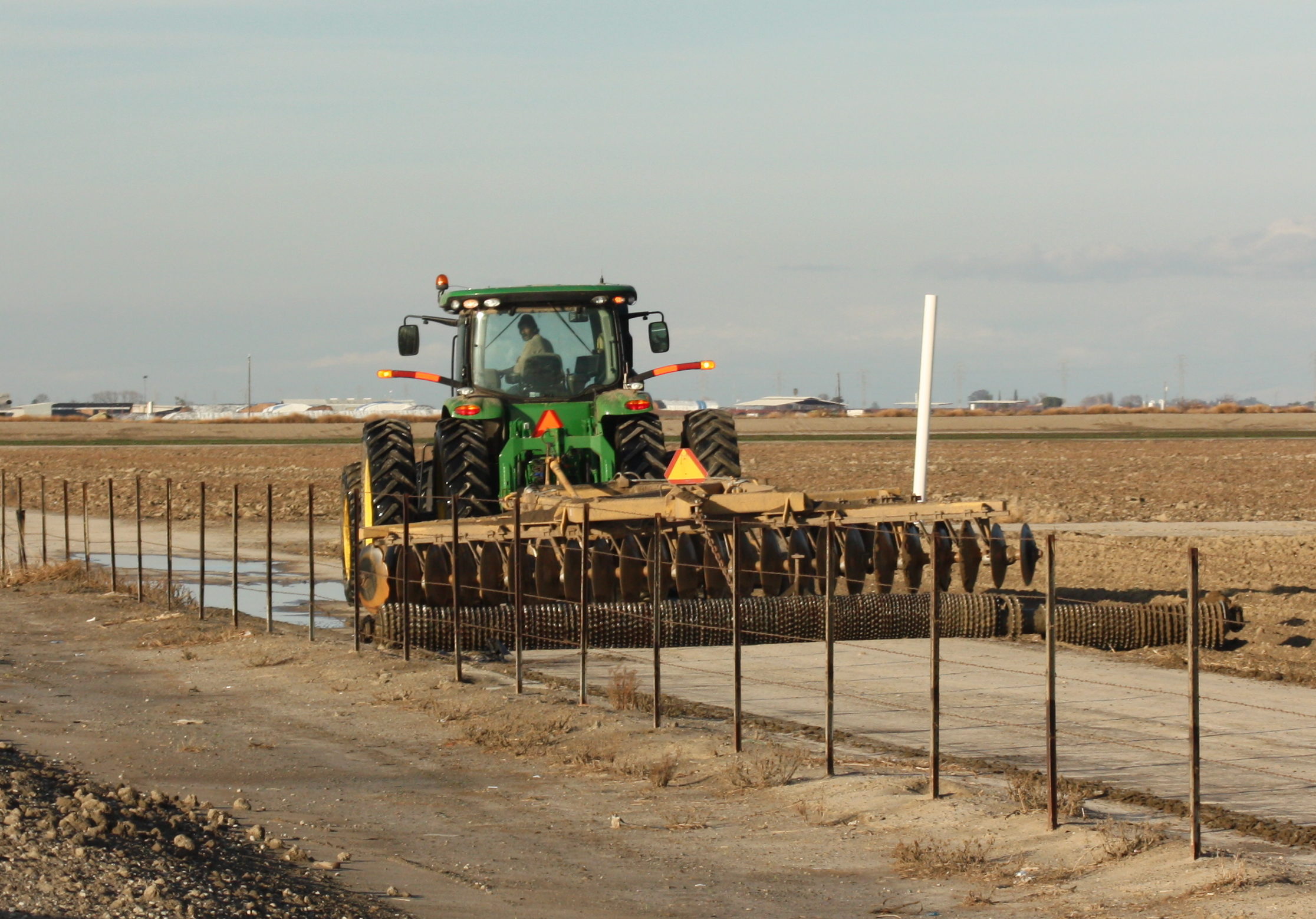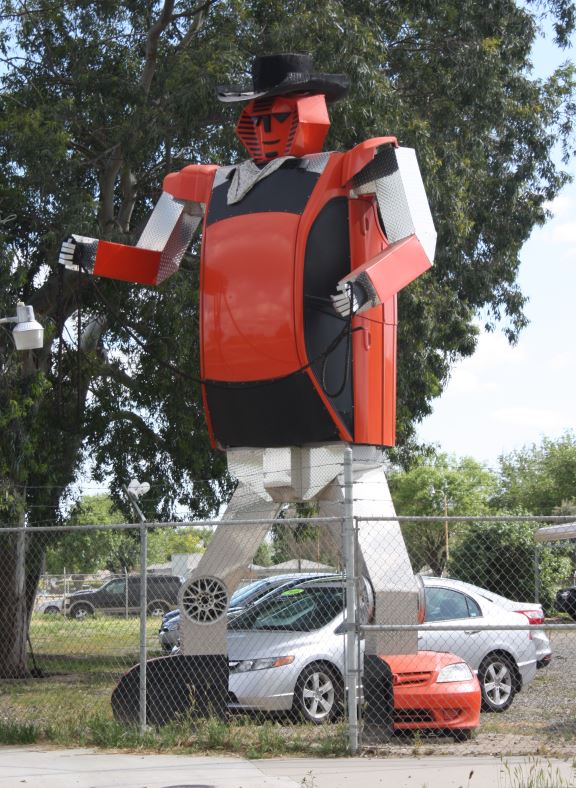 The California Department of Water Resources and the State Water Resources Control Board presented a SGMA workshop in Clovis at the Veteran’s Memorial Building on Thursday, January 9, 2020. Taryn Ravazzini, statewide director of groundwater management started the meeting at 9:00 am. She pointed out the exits and instructed everyone to walk down the sidewalk without panic and meet up somewhere if there was an emergency. It seemed silly to me, but there were about 100 folks from various Groundwater Sustainability Agencies, growers and others present and the room was packed. There was a similar meeting yesterday in Paso Robles and evidently everyone survived somehow. I ended up sitting in the NGO section because that was the only electrical outlet I could find. They were nice folks, very polite.
The California Department of Water Resources and the State Water Resources Control Board presented a SGMA workshop in Clovis at the Veteran’s Memorial Building on Thursday, January 9, 2020. Taryn Ravazzini, statewide director of groundwater management started the meeting at 9:00 am. She pointed out the exits and instructed everyone to walk down the sidewalk without panic and meet up somewhere if there was an emergency. It seemed silly to me, but there were about 100 folks from various Groundwater Sustainability Agencies, growers and others present and the room was packed. There was a similar meeting yesterday in Paso Robles and evidently everyone survived somehow. I ended up sitting in the NGO section because that was the only electrical outlet I could find. They were nice folks, very polite.
Ravazzini told the audience the purpose of this workshop was to help GSAs in submitting their Groundwater Sustainability Plans. There were well more than a dozen state employees in attendance to help answers questions.
DWR
Craig Altare, DWR was the first speaker and invited everyone to approach him with questions during the break. His topic was GSPs, DWR’s role in reviewing, submittal and posting GSPs. Altare said GSP content must include:
- administrative info
- basin setting with hydrogeologic model
- groundwater conditions and a water budget
- Sustainable management criteria
- a monitoring network
- and projects and management actions
The deadline for these GSPs for critically over-drafted basins are due on the last day of this month and all other basins January 31, 2022. DWR is required by law to evaluate GSPs within two years and there will be five year reviews to track progress. Much if not all of the information being given today is available online. DWR has 20 days (I guess February 20th) to post the GSPs on its website for comment. The public comment period will be open a minimum of 60 days. DWR will notify the GSAs about comments, but DWR will not be giving public comments on GSPs. A GSA can review the comments but it is up to the GSA how to respond. Altare said if there are difficult comments DWR is willing to work with the GSA in evaluating a response.
DWR will be checking GSPs for form and not just content. In other words DWR will check to be sure all the required information is provided in the GSP but this isn’t an evaluation to see if the GSP will achieve sustainability by the 2040 deadline.
There can be three outcomes for a GSP; approval meaning the GSA will be reporting based on the GSP. A plan could be accepted as complete. A plan could be determined incomplete but if DWR believes it can be completed within 180 days the GSA will get another shot at it. If a plan doesn’t meet the necessary criteria it is found to be inadequate. Altare said DWR has staff in each region to help get a completed GSP in time to meet the 180 day rewrite.
Altare said plans with many chapters from Sub Basins with multi GSAs will take longer. Not all the DWR assessments will not be released all at once. Getting the reviews finished in two years or less is DWR’s highest priority. There was then a question period and Altare said he expects to duplicate comments to DWR as originally received by the GSAs.
State Board
Next Natalie Stork from the State Board spoke about her agency’s role in SGMA. She said the state can’t step in and take control (known as a backstop) until there is a missed SGMA deadline. The state’s control is supposed to be temporary until the GSA can get its act together. The State Board is looking at the 2017 GSA formation, 2020 GSP completion and the 2025 review. It can’t step into the command role unless one of these deadlines are missed. A backstop starts with placing a sub basin on probation. While this is going on the State Board calls the shots, accumulate data and impose meters. Annual reports require well location and capacity, monthly amounts pumped and what the water is used for. SGMA requires the State Board to cover its costs for probation. A base fee is $300 per well and acre feet costs ranging from $25 to $50 per acre foot pumped and a 25 percent overall fee. Ouch. An interim plan most likely will require limited pumping in the sub basin.
There are two timelines; no plan and inadequate plan. State Board gives a 90-day notice there will be a probation hearing. After that hearing a local GSA has 180 days to fix things. After that if the GSA doesn’t meet minimum plan requirements the State Board can take over with an interim plan. All of this is available on the State Water Board website and it includes information on funding opportunities and the purpose of use for underground storage projects. Stork said the State Board understands bank will play a big part in SGMA. There is a water quality fact sheet being developed as well. There were also questions.
A man from the Community Water Coalition asked about how to deal with domestic well mitigation and what the State Board is doing to educate the GSAs on this. A man from Self Help Enterprises asked about how far a reach can the State Board use. Stork said the sub basin as a whole will have to be looked at. This is one of the most disturbing questions; if there are five GSAs in a sub basin and only one of them has a GSP and or implementation that meets the SGMA requirements as understood by the State Board does everyone have to suffer? I thought the answer was no but maybe not. Nicole Kuenzi an attorney with the State Board said this isn’t a clear yes or no situation. She said there could be a scenario where the entire sub basin is placed on probation; but there is a provision where the offending GSA can be “carved out” from the sub basin. She said she expects this will happen and not to misquote her but in the context I felt she saw this as the first option. So, see where my feelings get you.
Altare said DWR and the State Board will coordinate with each other during the evaluation period. A man asked since he expects other agencies such as Fish & Wildlife will be submitting comments, he asked will the State Board submit comment? He wanted to know how a soon a GSA will be notified. He also asked what happens to the money the State Board collects. Will it go back to the area where the violation occurred or disappear into the maw of the state? Stork said the State Board is only allowed to collect money to fund itself enough to carry out the probation tasks and those tasks will be developed specific to an area and there won’t be a pot of money somewhere. What happens if the State Board and DWR find different determinations and how will that be resolved? Ravazzini gave a long answer and if I understood her it could be boiled down to – she didn’t know. She mentioned Wade Crowfoot and Karla Nemeth and how both agencies have experts to work together.
A question was asked what happens if a lawsuit arises over SGMA, what if an entity sues a GSA over the GSP does the state backup the GSA? The attorney said she hopes no GSA will be left hanging and the State Board will be the defendant.
GSP Reporting System
DWR’s Monica Reis is in charge of GSP submittals. She has some tips and said to start early; even if the GSP isn’t fully fleshed there are parts than can be submitted. She recommended using Chrome or Firefox as the other browsers have been a bit shaky. There has been a good deal of speculation about DWR and the state’s ability to absorb what will prove to be one of the most massive dumps ever taken. Sorry, document dumps ever taken. Reis walked through the submittal steps. I’ll spare you under the theory that if you’re the one responsible for uploading a GSP and you’re relying on this report you’re already in big trouble. There is a reference import tool on Excel so that could help. There is a coordination agreement form as well but only the contact point can submit. Also, once the coordination agreement is submitted it can no longer be edited. Reis must have done a good job because there were no questions.
Annual Reports
Ben Gooding is a geologist with the state and he spoke on data. There is a monitoring network module on the state website for submitting data on groundwater. I wish Gooding would have talked faster, I almost had time to understand what he was saying. Of course I’m kidding. I’ve grown accustom to hearing engineers drown on at a leisurely pace and wasn’t prepared for a scientist who spoke as quickly as Gooding. There will be a map eventually showing monitoring wells and well types to the public. How about that? Really what could go wrong with anybody having access to well levels? A DAC advocacy attorney wanted to know just how soon she could get her hands on this data. Not for a while.
Next Gooding spoke about the annual reports required each April after a GSP is adopted. He expects a system will be prepared for this purpose by March but that’s not carved in stone at this time. One PDF report from each sub basin will be accepted. Groundwater extractions and methods, surface water supply and total use by basin. And show your work just like in math class. The change in storage must be submitted as well. An annual report will be prepared and available to the public.
A man from the Sports Fishing Alliance, long a litigious organization blaming Delta pumping for all things evil if I recall, wanted to know more about well by well extractions data. He found out the monitoring data as a sub basin will be available to the  public during the comment period.
public during the comment period.
We then took a break.
Assistance Programs
DWR’s Steven Springhorn told the folks gathered he’s looking for input on how to better serve the SGMA community. Both DWR and the Natural Resources Administration have websites with a lot of SGMA information. This isn’t new news but it was necessary to state the obvious for obvious reasons I won’t belabor. Springhorn said there are three parts to technical assistance; guidance and education, technical support services and statewide datasets and tools. He is trying to develop a standardized datasets that best serve everyone. Land use data was featured. It’s purpose is to inform water estimates, use projections, model development and estimated water transfers. There was a recent release of 2016 data and multi-crop data will be provided also. https://data.cnra.ca.gov/dataset/statewide-crop-mapping
Subsidence monitoring data is also available from three years ago. While this dataset is still incomplete efforts to update it further and increase the scope statewide. This information will be available for using in GSP reporting. The US Geological Survey is providing the data.
Stream gages are also represented to show current conditions, surface and groundwater interaction and a monitoring network. There are plans to install another 29 stations in this program. Groundwater and water quality maps are being developed. There are 24 monitoring wells in nine sub basins. There are another 43 monitoring sites under consideration and the local GSAs are being included in this effort.
Airborne Electromagnetic Surveys are on the way. This is the procedure where the helicopter tows a large magnet and flies a grid. The survey shows what the soil type and structure lie underground. The state wants to conduct these surveys statewide. This is the same procedure used by the Tulare Irrigation District.
Well Completion reports number in the hundreds of thousands and are housed by DWR. They are currently available for public inspection. The C2VSim Fine Grid also has a DWR team to help users develop their implementation of GSPs.
Next Keith Wallace, DWR’s public outreach specialist said immediately after SGMA was authorized DWR recognized there will be a need for communication. Each DWR regional office has a dedicated Point Of Contact person to help answer questions and guide GSAs through the process. Facilitation Support Services have been available through DWR. Professional meeting facilitators have been available to help groups achieve GSA formation and coordination agreements for example. There has been a lot of demand for this service in the meetings I’ve attended over the years.
Wallace said there is a brand new Written Translation Services where a GSA can have its documents translated into 10 foreign languages common to California’s ethnic population but the limit is 1,500 words per document, if I understood correctly. That’s much – as I write this sentence my Word program tells me I’m at 2,260 words.
Wallace said there could be $100 million available for grant assistance in 2021 to help implement GSPs. He said he’d like more GSA forums and a Groundwater Summit. Awareness of programs and a venue of the SGMA folks to get together to swap ideas and how to create a nexus with the State’s Water Resilience Portfolio. Wallace reiterated DWR wants questions and feedback. He encouraged everyone to subscript to DWR’s SGMA list server. You’ll get a monthly newsletter and important notifications. It was question time again and the translation service was the most popular. A lady from Self Help Enterprise said many of her clients don’t have internet access and could use actual paper.
SWRC Board Assistance
Stork spoke again saying groundwater recharge, water availability tool, SWRCB funding and other State Board help is the topic. There are now new permitting processes for recharging surface water to the aquifer. There was a 180-day temporary permit and it is now a five year permit designed for GSAs and high flows. The standard permit has a streamlined pathway targeting GSA. It’s an administrative process with reduced fees. How about that? You have to be in a 118 Basin and a local agency. CEQA needs to be completed. The diversion period must be between the beginning of December to the end of March. Limits include only 20 percent of the daily flow. Diversions can take place during flood conditions and based on health and safety considerations. The usage and storage accounting must demonstrate beneficial use and the same account requirements are used. A GSA can get surface water rights and the fees are reduced 25 percent.
The State Board has already given out all the water rights in the state, fully appropriated. The Water Rights Division has mapped those rights. Rights on some of the streams in the state are full time and some are seasonal. There is a SWRCB map on its website showing the streams.
Stork said the State Board has several grant programs including drinking water and groundwater treatment.

In addition to the State Board there are nine regional boards and they all deal with water quality. There are many opportunities to combine some of the many groundwater programs and leverage them for SGMA. Stork said to contact Regional Board staff to see if they have some information that could fill out the data gaps in a GSP. She said none of the state’s programs supersede each other. Question time again. Non-extractive, beneficial use, recharge? Stork said storage underground on its own isn’t a beneficial use. There has to be a point source and a defined use to have a water right.
Conclusion
Ravazzini said it is important to acknowledge the heavy lifting the locals have been able to achieve to get SGMA up and running. She said keeping it local is a marathon and not a sprint. She reiterated the desire of the State Board and DWR to be as helpful as possible. Today’s meeting was video recorded and will posted on the web. That was that.
DISCLAIMER OF RESPONSIBILITY; Waterwrights strives to provide his clients with the most complete, up-to-date, and accurate information available. Nevertheless, Waterwrights does not serve as a guarantor of the accuracy or completeness of the information provided, and specifically disclaims any and all responsibility for information that is not accurate, up-to-date, or complete. Waterwrights’ clients therefore rely on the accuracy, completeness and timeliness of information from Waterwrights entirely at their own risk. The opinions expressed in this report are those of the author and do not represent any advertisers or third parties.
ALL RIGHTS RESERVED. Copyright 2020 by Don A. Wright/www.WaterWrights.net
































